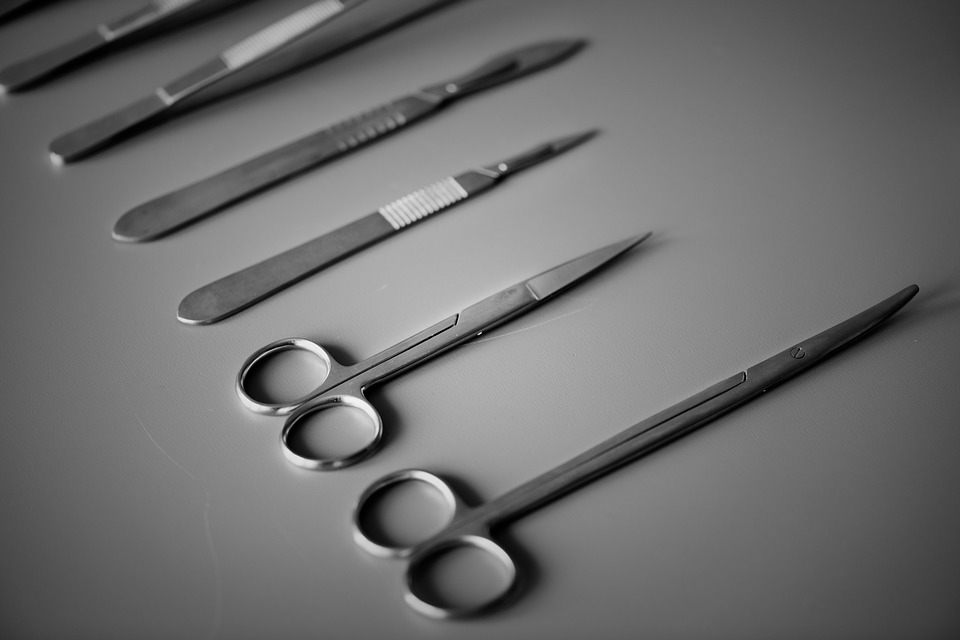
When someone mentions neurosurgery, the picture that goes through most people’s minds is that of a brain surgeon. While that’s part of what a neurosurgeon does, that only takes up about a quarter of their time. The rest is spent on the spine: back pain, spinal disc problems, and sometimes even leg pain. That’s because, as the name implies, neurosurgeons are responsible for the entire nervous system, not just the brain. Maladies of the nervous system don’t just occur in the brain, they include pinched nerves and sciatica, back pain, and mysterious tingling in the extremities.
Whether it’s repairing a herniated disc through an anterior cervical discectomy or performing a full-fledged craniectomy, the types of procedures a neurosurgeon can perform are extremely varied. For those rare occasions when a patient does have to go under the knife, it’s helpful to know what exactly all the various tools are that a neurosurgeon has at their disposal.
While nearly every surgery makes use of scalpels, sutures or Dermabond, and forceps, neurosurgery takes specialized tools beyond standard surgical equipment. Here are four of the most common types of instruments that are used.
- Neuroendoscopic Instruments– Neuroendoscopic instruments are used to perform a type of surgical procedure on the brain that doesn’t require removing a large portion of the skull. Instead, a small hole, roughly the diameter of a dime, is used to feed an endoscope into the affected area. An endoscope is a thin flexible tube that is able to be manipulated by the neurosurgeon to move through cramped spaces.
An endoscope can have a camera on one end, allowing the surgeon to see where the endoscope is going and to see when it arrives. The endoscope can also have small scissors and forceps on the end, allowing the neurosurgeon to do delicate work inside a patient’s brain. The primary benefit to neuroendoscopic surgery is the lack of a large opening in the skull. This means that recovery from surgery is faster, with less pain and much less scarring.
- Intracranial Pressure Monitors– When working on the brain, one of the biggest dangers is intracranial swelling. This dangerous condition can be caused by many different things, ranging from bleeding in the brain to an excess of cerebrospinal fluid. Left unchecked, intracranial pressure can result in seizures, stroke, brain damage, or even death.
To track this, neurosurgeons use pressure monitors to ensure that pressure inside the skull remains safe during surgery and during post-op recovery. Prior to the surgery, your surgeon will insert a small sensor into your skull. This sensor is calibrated and placed inside your brain where it can transmit the necessary data to the doctor and nurses. The probe will remain in your head until you have completed your post-operative recovery period. Once that is done, you don’t have to go back into surgery; the neurosurgeon will remove the probe at your bed and then suture your skin back into place.
- Artificial Dura Mater– Dura mater is the name of the tough membrane that surrounds your brain and spinal cord. It is the outermost layer in the protective covering and keeps the cerebrospinal fluid from leaking. Essentially, it’s a tough sac that makes sure that the vital fluid doesn’t spill out. Cerebrospinal fluid is extremely important because it provides a liquid cushion between your brain, spinal cord, and your skull and spine. Without the fluid, your brain would rattle around inside your skull, causing severe concussions every time you shook your head.
When a neurosurgeon has to do surgery on the brain or spinal cord, they have to cut open the dura layer. To repair the hole that they cut, they will usually suture the layer shut so that it can heal and fuse on its own. However, in some cases, the dura mater is compromised due to illness. In that case, an artificial replacement is used.
These artificial replacements are made to be biologically absorbable and can be sutured in place. These dura membranes protect against leakage of the spinal fluid and can be cut or adjusted in many different ways.
- Spinal Fluid Shunts– In dealing with cerebrospinal fluid, one condition that neurosurgeons often deal with is hydrocephalus. This syndrome is marked by an excess of spinal fluid in the brain, causing an increase in intracranial pressure. In hydrocephalus, cerebrospinal fluid cannot drain properly into the base of the brain to be reabsorbed into the body.
One common method of dealing with this malady is to install shunts in the brain that enable the fluid to drain and flow properly. These shunts are adjustable for the patient, allowing them to maintain an even intracranial pressure no matter the position or height of the sufferer.
Neurosurgery, like any complex medical procedure, has its own specialized set of tools. Knowing what some of the procedures and instruments are before you go in for your own surgery will help you be better informed and more able to ask better questions.


